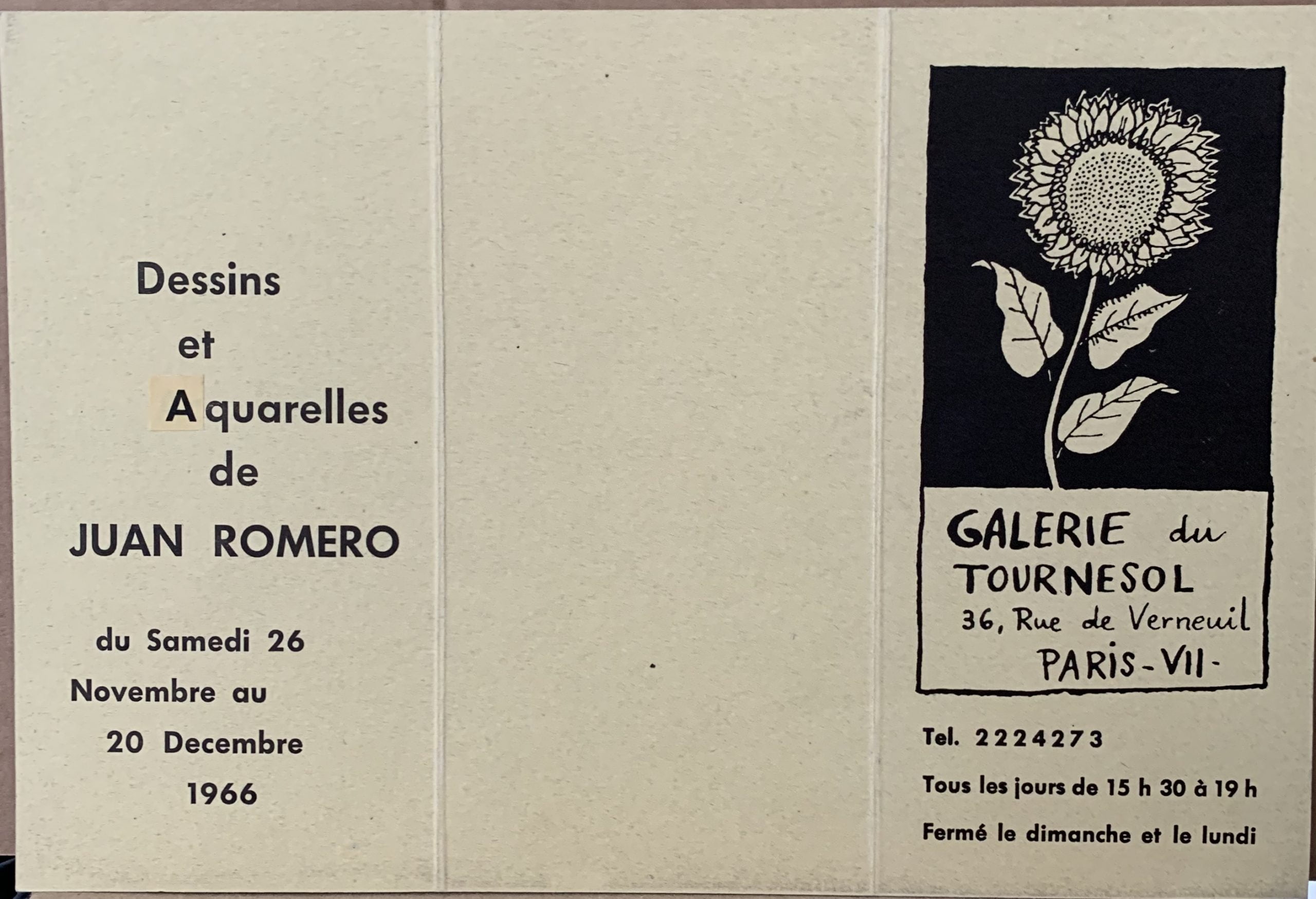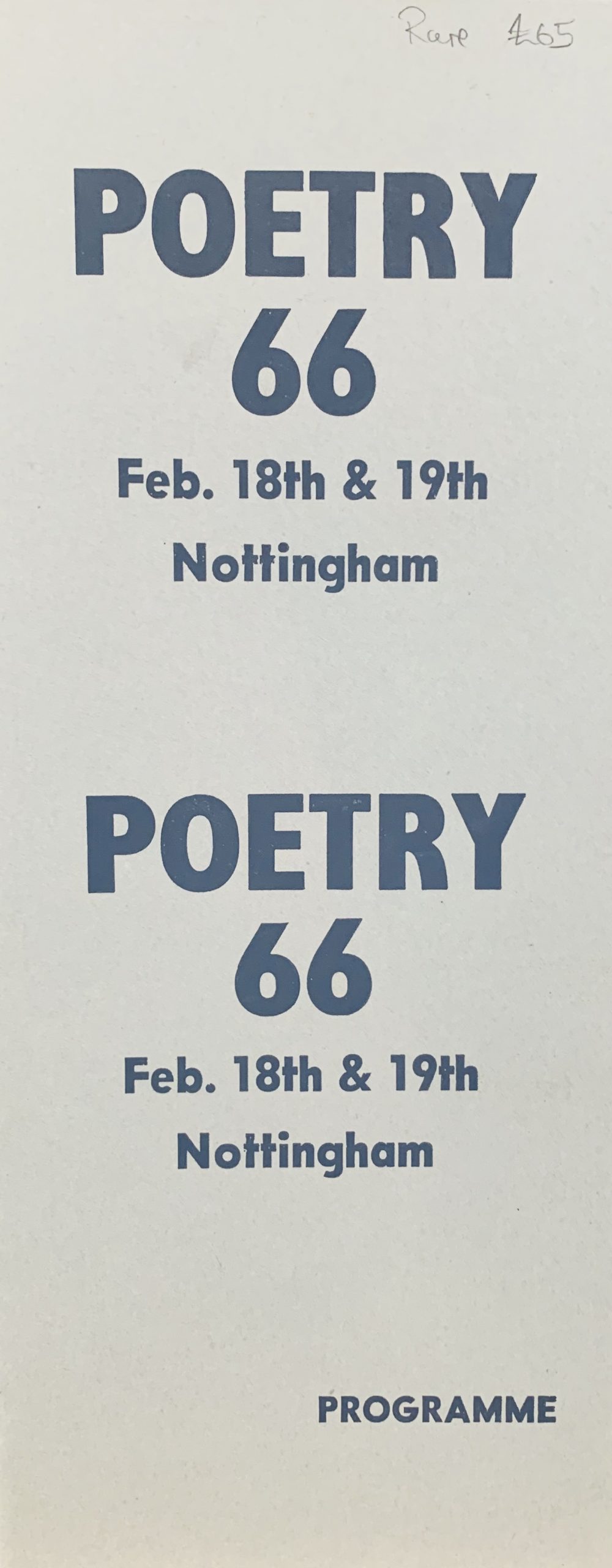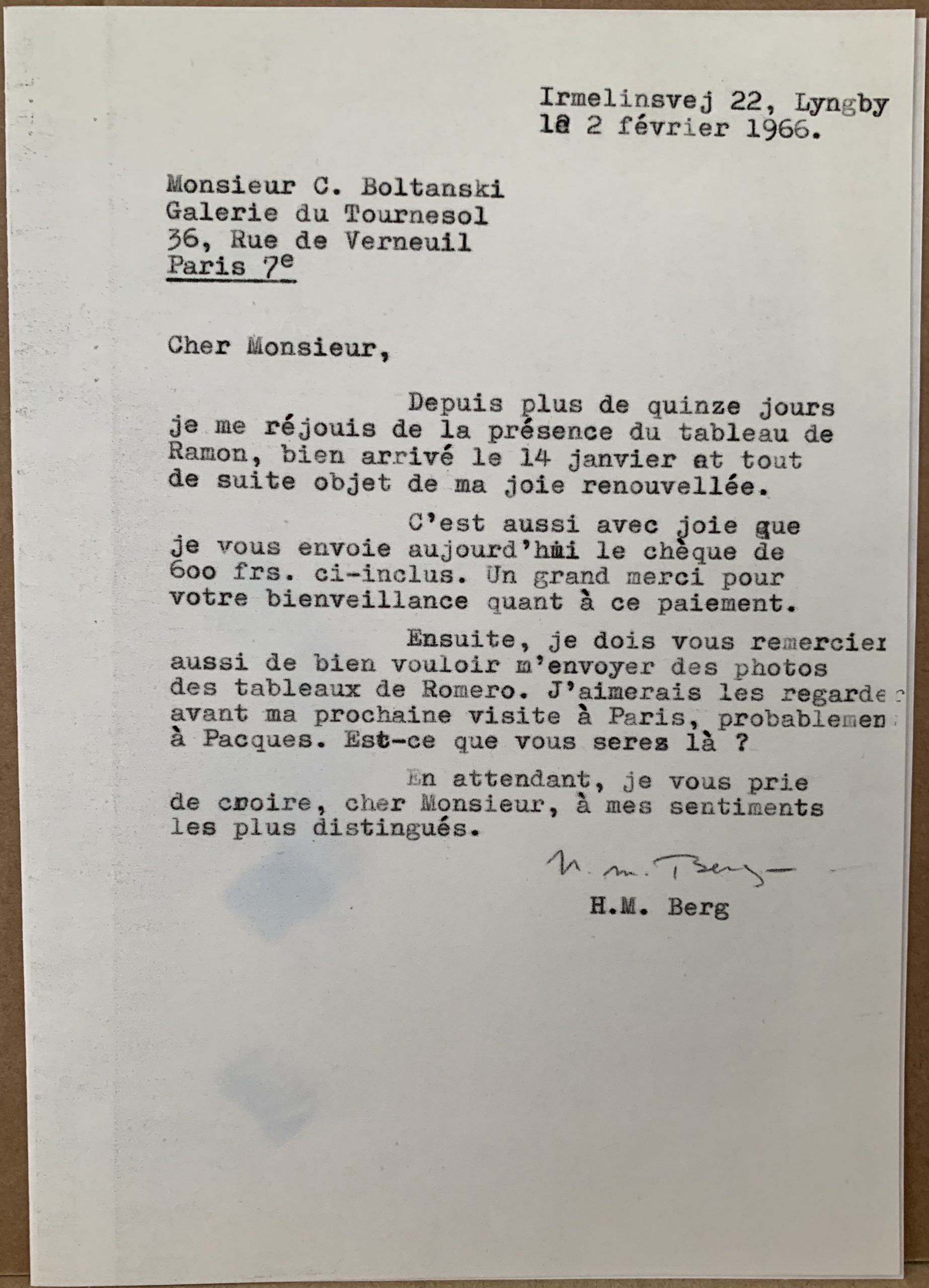Posted at 22:39h
in
Miscellany
Nottingham: Trent Book Shop, 1966
25.4 x 10cm, 6pp. Announcement and brochure for this small show of concrete poetry which showed works by dsh, Gael Turnbull, Jeff Nuttall, Hugh MacDiamidf, Bob Sobbing, Edwin Morgan, Jonathan Williams, John Furnival, Tom Clark, and others but NOT FInlay. There is a short poem reproduced which is ascribed to Finlay called “No Thank You, I Can’t Come” but was written by Simon Cutts which is a parody of the format of "Dancers inherit the party" and is a sly and funny dig at Finlay for not participating. VG although a former soft crease top left on the card. Very scarce.
...














